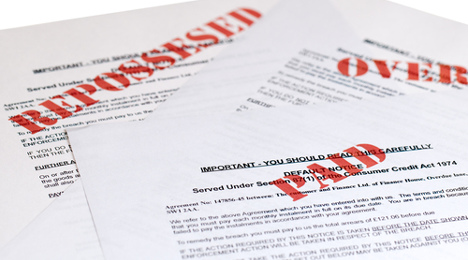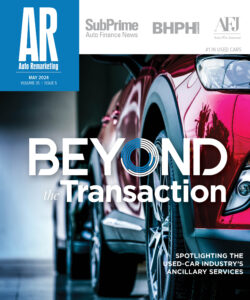August auto defaults rise 8 basis points

While noting that outstanding balances are at an all-time high, auto defaults moved higher again in August, but not to a degree to trigger an alarm from S&P Dow Jones Indices and Experian.
The auto segment of the S&P/Experian Consumer Credit Default Indices for August posted an 8 basis point increase versus the previous month to come in at 1.01 percent. The latest reading reported on Tuesday also is 11 basis points higher than August of last year.
Meanwhile, the composite rate — a comprehensive measure of changes in consumer credit defaults — ticked up 2 basis points on a sequential basis in August to land at 0.85 percent. Despite the slight rise, the composite rate is 11 basis points lower than the same month last year and has remained below 1 percent for 16 months in a row.
Like auto defaults, the first mortgage default rate moved up 2 basis points from the prior month to come in at 0.68 percent for August.
The bank card default rate was the only decrease in August at 2.86 percent, down 6 basis points from last month.
The five major cities included in Tuesday’s update produced mixed results in August, with three cities showing higher default rates.
New York reported a 0.91 percent default rate for August, rising 14 basis points from July's reading of 0.77 percent.
Dallas’ default rate increased 5 basis points from the prior month to 0.74 percent.
Chicago also saw its default rate increase, up 4 basis points to 0.93 percent.
Los Angeles registered a default rate of 0.60 percent, a decrease of 3 basis points.
Miami also posted a decrease, the first since February. Miami’s rate dropped 16 basis points to 1.21 percent.
“Despite small monthly movements in consumer credit defaults, the overall default rates are stable and close to the lowest levels since shortly before the financial crisis,” said David Blitzer, managing director and chairman of the index Committee at S&P Dow Jones Indices.
“Bank card default rates are more volatile and slightly higher than those tracking mortgages or auto loans,” Blitzer continued. “Compared to a year earlier, auto and bank card defaults rose 11 and 15 basis points, respectively; mortgage loan defaults are 16 basis points lower. The overall consumer credit picture gives little reason to be concerned about default rates.
Blitzer closed his monthly assessment by mentioning related data published by the Federal Reserve that showed the growth in consumer and household debt is currently about 4.4 percent per year, increasing about 2 percentage points faster than nominal GDP growth.
“Consumer credit — bank cards and auto loans — grew before, during and after the recent recession and is currently at an all-time high,” Blitzer said. Mortgage debt peaked in the first quarter of 2008 and reached its most recent low point in the first quarter of 2015. It is now up 2.1 percent from the low.
“Barring a repeat of the recent and severe recession, both consumer credit and mortgage debt outstanding are expected to continue growing at, or faster than, the pace of nominal GDP growth,” he added.
Jointly developed by S&P Indices and Experian, analysts reiterated the S&P/Experian Consumer Credit Default Indices are published monthly with the intent to accurately track the default experience of consumer balances in four key loan categories: auto, bankcard, first mortgage lien and second mortgage lien.
The indices are calculated based on data extracted from Experian’s consumer credit database. This database is populated with individual consumer loan and payment data submitted by lenders to Experian every month.
Experian’s base of data contributors includes leading banks and mortgage companies and covers approximately $11 trillion in outstanding loans sourced from 11,500 lenders.

 View The Latest Edition
View The Latest Edition

